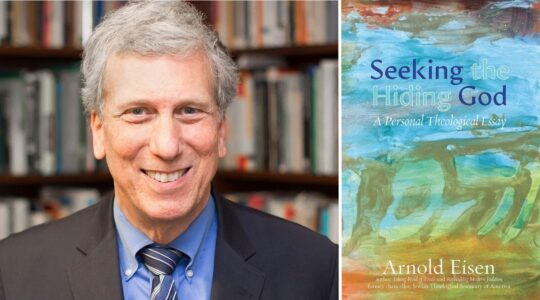The primary advice I came away with from a fascinating panel discussion on new media, and its impact on the Jewish community, was to follow rather than lead.
“What we call technology, young people call life,” noted one of the speakers at the recent event, sponsored by Natan, a New York-based charity that seeks to inspire young philanthropists to become engaged in Jewish giving by funding innovative Jewish projects.
The four speakers, all in their 30s and active in Jewish life personally and professionally, agreed that people are spending more and more time online; that the opportunity to reach large numbers with Jewish content is great (but that the quality of most of that content today is sub-par); and that taking risks is essential to success, which, by the way, is almost impossible to measure.
“The only wrong decision is if you see that what you’re trying isn’t working and then you stop quickly,” said David Bryfman, director of the New Center for Collaborative Leadership at the The Jewish Education Project here. “The important message is that none of us knows what the next big thing in technology will be.”
And experimentation and failure are a necessary part of the process.
Jewish organizations and educators would do well to take advantage of what is already available in terms of online technology and content, and modify it for their own purposes rather than try to reinvent the wheel, the panelists agreed.
Ari Kelman, a professor of American studies at the University of California-Davis who has researched the Jewish presence on the Web, observed that for many Jews, the first place they turn to in seeking information about Jewish life is not a rabbi or educator, but the Internet. And what they’ll find is a decidedly mixed bag — a great many Jewish sites, most of them of little substance.
Kelman noted that there are a disproportionately high number of Orthodox-oriented sites, but “very little cross-conversation” between the Orthodox and other Jewish sites, which is regrettable.
One popular educational site, he said, is MyJewishLearning.com, a sophisticated transdenominational nonprofit offering thousands of articles on Jewish information and education. But “the first place people go to is Wikipedia.com,” said Bryfman, a fact that he said “symbolizes the lack of authority in the Jewish world.”
Rebecca Goldman, program officer at Steven Spielberg’s Los Angeles-based Righteous Persons Foundation, said her organization invests in new media to help its grantees do their work more efficiently.
She observed that the old model of religious practice focused on going to a certain place (the synagogue) on a certain day (Shabbat, most notably) and at certain times (hours for services), but that is becoming obsolete. “Now you have to be where young people are” and that’s the Internet, which reaches across all generations, all the time.
Goldman said that while the first thing people ask about a website is how many page views or unique visitors it gets, her foundation’s goal is to help “create more meaningful Jewish life,” so the actual numbers are not necessarily critical.
Support the New York Jewish Week
Our nonprofit newsroom depends on readers like you. Make a donation now to support independent Jewish journalism in New York.
“I don’t know what success looks like,” she readily admitted.
Sarah Lefton, the creator of “G-dcast,” a popular animated cartoon treatment of the Torah portion of the week, agreed.
She said her primary goal is Jewish literacy, and “for me, the metrics of success is about impact, and changing Jewish lives,” acknowledging that gauging such things is “a mystery.”
In the three years that “G-dcast” has been producing its films, Lefton said she has learned that “people won’t watch a video longer than 3 minutes and 45 seconds,” and that it is best to make incremental changes, “then get it right and keep making it better.”
Several of the panelists agreed with Ari Kelman’s observation that “success in Jewish education today is measured by the thickness of socialization” — the social networking relationships created — rather than “the acquisition of Jewish knowledge.”
This may be a bitter pill for educators to swallow, but David Bryfman, a professional Jewish educator himself, noted that teens are drawn to Jewish experiences like camp and Israel trips for the social aspect.
“In general,” he said, “knowledge plays a smaller role” these days, predicting that teachers may be replaced by online courses and web designers with appealing style.
How are we to respond? We can resist such views on pedagogical or ideological grounds, or embrace them as insights into the reality of a rapidly changing world. But we need to remember that the new media is all about personal choice, not only in receiving knowledge but in creating and sharing it, too.
Technology is a tool, not an end in itself. So while we should be following young people to meet them where they are, we can still be leading with good ideas, including ones based on the teachings of our sages from centuries past.
That path can take us from an idea in our head to the furthest reaches of cyberspace.
More from Gary Rosenblatt:
Earlier Between the Lines weekly columns
Blog
Support the New York Jewish Week
Our nonprofit newsroom depends on readers like you. Make a donation now to support independent Jewish journalism in New York.
The New York Jewish Week brings you the stories behind the headlines, keeping you connected to Jewish life in New York. Help sustain the reporting you trust by donating today.





